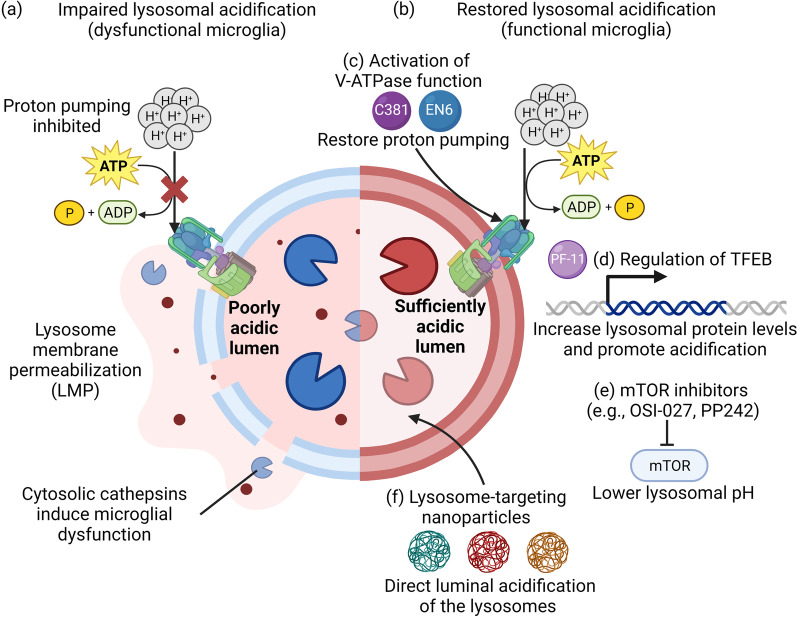Fig. 3.
An overview of lysosome-targeting therapeutic agents developed to reacidify impaired lysosomes under diseased conditions. a Impaired lysosomal acidification results in lysosomal membrane permeabilization, leading to the release of cathepsins into cytosol that impair microglial function. b Lysosome reacidifying agents can restore lysosomal function to counteract undesired downstream consequences including LMP. Current lysosome-targeting therapeutic strategies have focused on using c small-molecule modulators such as C381 and EN6 to activate V-ATPase activity, d small-molecule activator of TFEB (PF-11) to increase lysosomal protein transcription and expression as well as promote lysosomal acidification, e mTOR inhibitors such as OSI-027 and PP242 to lower lysosomal pH, and f lysosome-targeting acidic nanoparticles to directly acidify the lysosome lumen. The figure was created with BioRender.com

